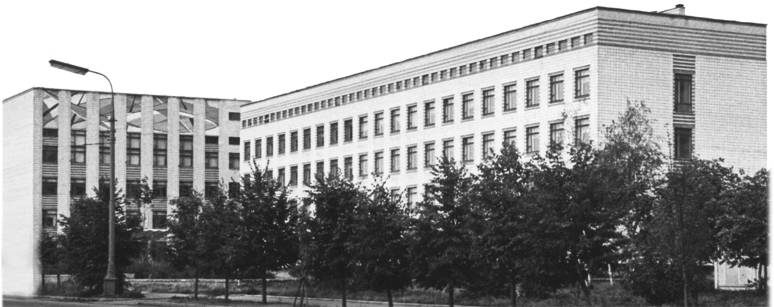Staff:
Aliev T.M., Berdnikova D.V., Gulakova E.N., Kosmacheva A.A., Oshepkov A.S., Panchenko P.A., Sergeeva A.N., Fedorov Y.V., Chernokova E.Y., Shepel' N.E.
More info: https://ineos107.ru/en
Main publications in 2009-2011 гг.:
1. S.V. Paramonov, V. Lokshin, H. Ihmels, O.A. Fedorova, "Influence of DNA-binding on the Photochromic Equilibrium of a Chromene Derivative", Photochem. Photobiol. Sci. 2011, 10, 1279-1282. (DOI: 10.1039/c1pp05094j).
2. S.V. Paramonov, V. Lokshin, O.A. Fedorova "Spiropyran, Chromene or Spirooxazine Ligands: Insights into Mutual Relations between Complexing and Photochromic Properties", J. Photochem. Photobiol. C: Photochem. Rev. 2011, 12 (3), 209-236. (DOI: 10.1016/j.jphotochemrev.2011.09.001).
3. E.V. Tulyakova, O.A. Fedorova, J.-C. Micheau, S.V. Paramonov, V. Lokshin, G. Vermeersch, S. Delbaere, "Photochromism and Metal Complexation of a Macrocyclic Styryl Naphthopyran", Chem.Phys.Chem. 2011, 12, 1294-1301. (DOI: 10.1002/cphc.201100052)
4. E. Tulyakova, S. Delbaere, Y. Fedorov, G. Jonusauskas, and O. Fedorova "Multimodal metal cation sensing with bichromophoric dye" European J. Chemistry 2011, 17, 10752-10762.
5. Е.Н. Гулакова, А.Г. Ситин, Л.Г. Кузьмина, О.А. Федорова "Синтез фотохромных стирилзамещенных азинов", Ж.Орг.Х. 2011, 47, №2, 253-260 [Russian Journal of Organic Chemistry 2011, 47, №2, 245-252].
6. Ю.В. Федоров, Е.Ю. Черникова, А.С. Перегудов, Н.Э. Шепель, Е.Н. Гулакова, Л. Г. Кузьмина, О.А. Федорова "Самоорганизация супрамолекулярных ансамблей на основе молекул гетарилфенилэтенов, фталевой кислоты и катионов калия", Изв. АН, Сер. хим. 2011, №2, 274-287 [Russ. Chem. Bull., Int. Ed. 2011, 60, No. 2, 280-294].
7. O.A. Fedorova, Yu.V. Fedorov, I.E. Labazava, E.N. Gulakova, J. Saltiel "Complexes of amino acids with a crown-ether derivative of 4-styrylpyridine. Monotopic or ditopic?", Photochem. Photobiol. Sci. 2011, 10, 1954-1962. (DOI: 10.1039/C1PP05007A).
8. D.V. Aleksanyan, V.A. Kozlov, Y.V. Nelyubina, K.A. Lyssenko, L.N. Puntus, E.I. Gutsul, N.E. Shepel, A.A. Vasil'ev, P.V. Petrovskii and I.L. Odinets "Synthesis, catalytic activity, and photophysical properties of 5,6-membered Pd and Pt SCS′-pincer complexes based on thiophosphorylated 3-amino(hydroxy)benzoic acid thioanilides", Dalton Transactions 2011, 40, 1535-1546. (DOI:10.1039/C0DT01154A).
9. Pavel A. Panchenko, Yury V. Fedorov, Olga A. Fedorova, Boris A. Izmailov, Valery A. Vasnev, Vladislav V. Istratov, Ekaterina A. Makeeva, Marina N. Rumyantseva and Alexander M. Gaskov "Hybrid sensor materials based on tin(IV) oxide and crown-containing 4-amino-1,8-naphthalimides" //Mendeleev Commun., 2011, 21, 12-14.
10. Pavel A. Panchenko, Yuri V. Fedorov, Valeri P. Perevalov, Gediminas Jonusauskas and Olga A. Fedorova "Cation-Dependent Fluorescent Properties of Naphthalimide Derivatives with N-Benzocrown Ether Fragment" //Journal of Physical Chemistry A, 2010, -Volume 114, -Issue 12, -pp. 4118-4122. DOI:10.1021/jp9103728
11. SergeyParamonov, Stéphanie Delbaere, Olga Fedorova, Yuri Fedorov, Vladimir Lokshin, André Samat, Gaston Vermeersch "Structural and photochemical aspect of metal-ion-binding to a photochromic chromene annulated by crown-ether moiety" //Journal of Photochemistry and Photobiology A-Chemistry, 2010, -Volume 209, -Issue 2-3, -pp.111-120. DOI:10.1016/j.jphotochem.2009.10.014
12. Olga Fedorova, Elena Lukovskaya, Artem Mizerev, Yury Fedorov, Alla Bobylyova, Anton Maksimov, Anna Moiseeva, Aleksander Anisimov and Gediminas Jonusauskas "Synthesis and multiparameter sensor properties of the crown-containing thiophene derivatives" //Journal of Physical Organic Chemistry, 2010, -Volume 23, - Issue 3, -pp. 246–254. DOI:10.1002/poc.1610
13. E. V. Tulyakova, G. Vermeersch, E. N. Gulakova, O. A. Fedorova, Yu. V. Fedorov, J-C. Micheau and S. Delbaere "Metal Ions Drive Thermodynamics and Photochemistry of the Bis(styryl) Macrocyclic Tweezer" //Chemistry - A European Journal, 2010, -Volume 16, -Issue 19, -pp. 5661-5671. DOI:10.1002/chem.200903226
14. Elena Lukovskaya, Alla Bobylyova, Yuri Fedorov, Anton Maksimov, Alexander Anisimov, OlgaFedorova, Gediminas Jonusauskas and Frédéric Fages "Metal Ion Modulated Torsion Angle in a Ditopic Oligothiophene Ligand: Toward Supramolecular Control of π Conjugation" //ChemPhysChem, 2010, 11, 3152–3160. DOI:10.1002/cphc.201000356
15. V. Lokshin, N. A. Larina, O. A. Fedorova, A. Metelitsa and V. Khodorkovsky "Photochromism of 2-benzyl-3-benzoyl-4(1H)-quinolone derivatives" //J. Photochem. Photobiol. A: Chem. 2009, –V. 201, –pp.8-14.


